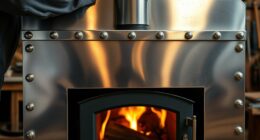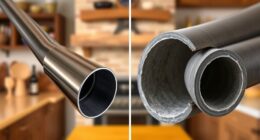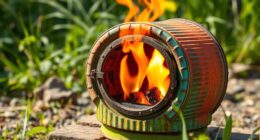I have experienced a significant amount of frustration due to smoke leaking from my wood stove pipes. It feels like trying to hold water in a sieve – an ongoing struggle.
But, fear not! I’ve discovered some tried and true methods to put an end to this smoky situation. In this article, I’ll walk you through the common causes of smoke leakage, how to inspect and clean your pipes, and the best ways to seal those joints and connections.
Let’s get that smoke where it belongs – out of your chimney!
Key Takeaways
- Identify and address common causes of smoke leakage, such as damaged gaskets or blocked chimneys.
- Regularly inspect and clean wood stove pipes to remove creosote and debris buildup.
- Properly seal joints and connections using heat resistant sealant to prevent smoke leaks.
- Install a chimney cap or rain cap to prevent water damage, block debris entry, and improve airflow.
Identifying the Common Causes of Smoke Leakage
I can’t seem to figure out why there’s smoke leaking from my wood stove pipes. As someone who’s dealt with this issue before, I can share some common solutions and troubleshooting tips to help you identify the cause.
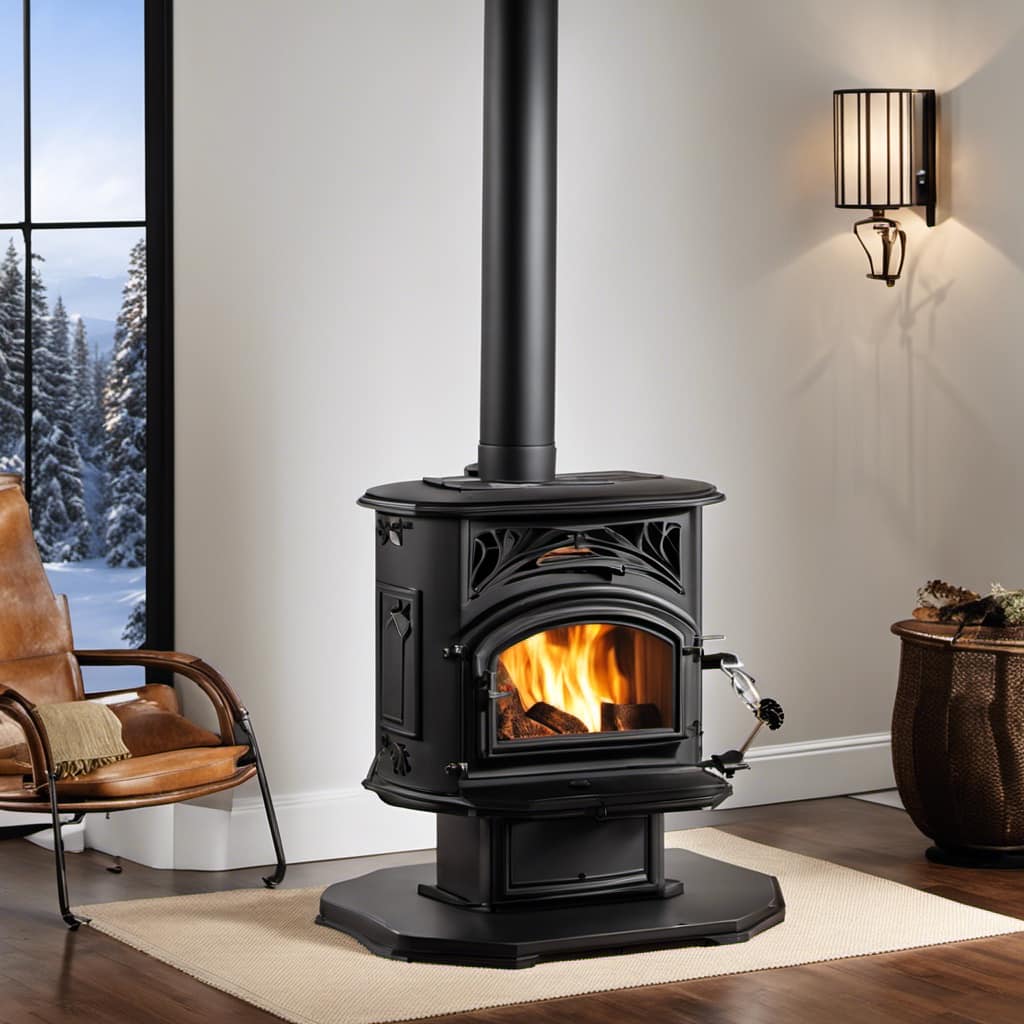
One possible reason for the smoke leakage could be a damaged or faulty gasket. Check the gasket around the stove door and flue pipe for any signs of wear or deterioration.
Another common culprit is a blocked chimney or flue. Build-up of creosote or debris can restrict airflow and cause smoke to escape. Regular cleaning and maintenance can prevent this.
Additionally, ensure that the stovepipe is properly connected and sealed.
If the issue persists, it’s best to consult a professional for further assistance.
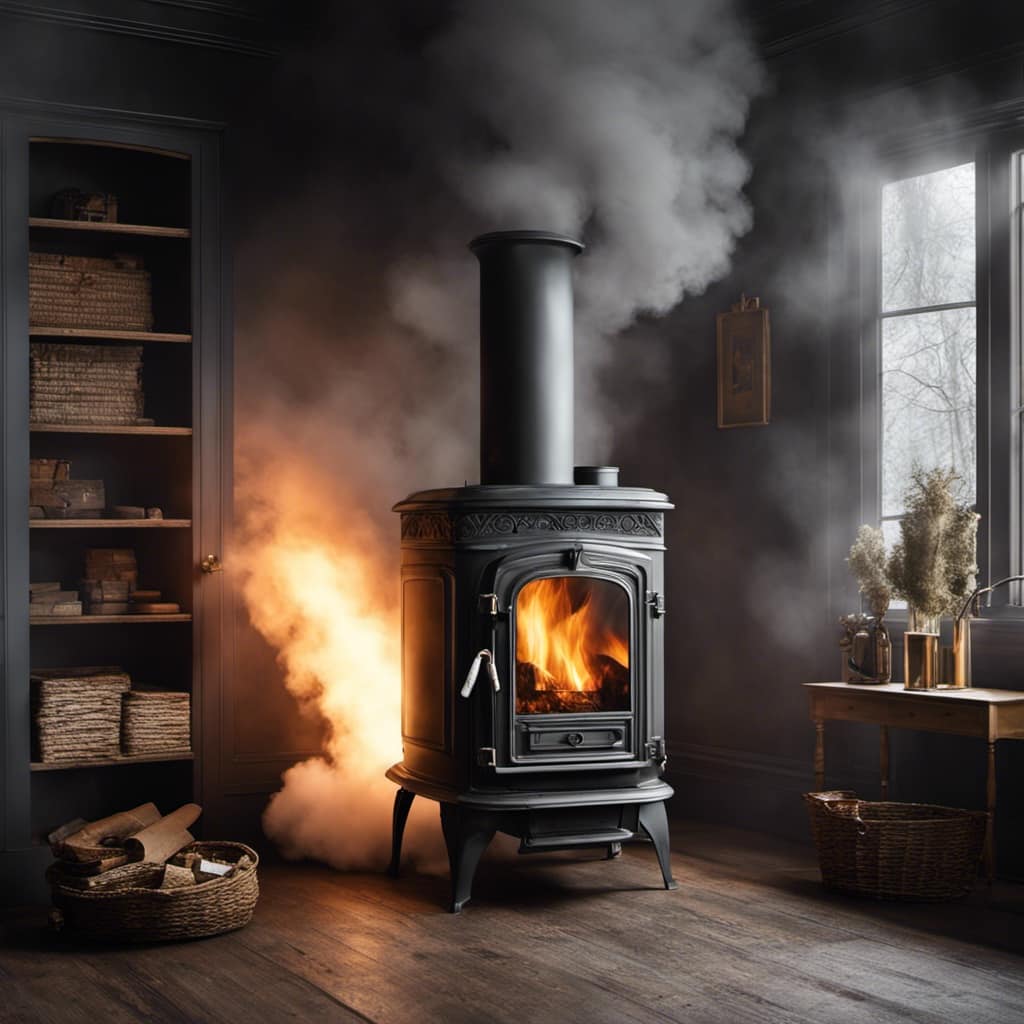
Inspecting and Cleaning the Wood Stove Pipes
To ensure proper functioning of your wood stove, it’s important to regularly inspect and clean the stove pipes for any blockages or buildup. Neglecting this maintenance can lead to decreased efficiency, increased risk of fire, and potential health hazards.
Here are three key cleaning techniques and safety precautions to follow:
-
Use a chimney brush: Invest in a high-quality chimney brush that matches the size of your stove pipe. Insert it into the pipe and scrub vigorously to remove creosote and soot buildup.
-
Clear any obstructions: Check for any debris, animal nests, or leaves that may have accumulated in the pipe. Use a chimney rod or a stiff wire brush to remove these obstructions.

-
Wear protective gear: Cleaning stove pipes can be a dirty and potentially dangerous task. Always wear gloves, safety goggles, and a dust mask to protect yourself from harmful particles and chemicals.
Sealing the Joints and Connections
Sealing the joints and connections is crucial to prevent any smoke leaks from the wood stove pipes. When it comes to wood stoves, ensuring that the smoke stays contained is essential for both safety and efficiency.
By properly sealing the joints and connections, we can prevent heat loss and maintain optimal heating performance. To achieve this, it’s important to use a heat resistant sealant specifically designed for wood stove pipes. This type of sealant can withstand high temperatures and create a durable, long-lasting seal.
Before applying the sealant, it’s necessary to clean the joints thoroughly to remove any debris or residue that may hinder the sealing process.

Installing a Chimney Cap or Rain Cap
By installing a chimney cap or rain cap, we can effectively prevent rainwater and debris from entering the chimney while also improving overall airflow. This simple installation provides several benefits for homeowners.
Here are three reasons why chimney cap installation is essential:
-
Protection from rainwater: A chimney cap acts as a shield, preventing rainwater from entering the chimney. This helps to keep the interior dry, preventing water damage and potential structural issues.
-
Prevention of debris entry: Leaves, twigs, and other debris can easily find their way into an uncovered chimney. A chimney cap blocks these unwanted materials from entering, reducing the risk of blockages and potential fire hazards.
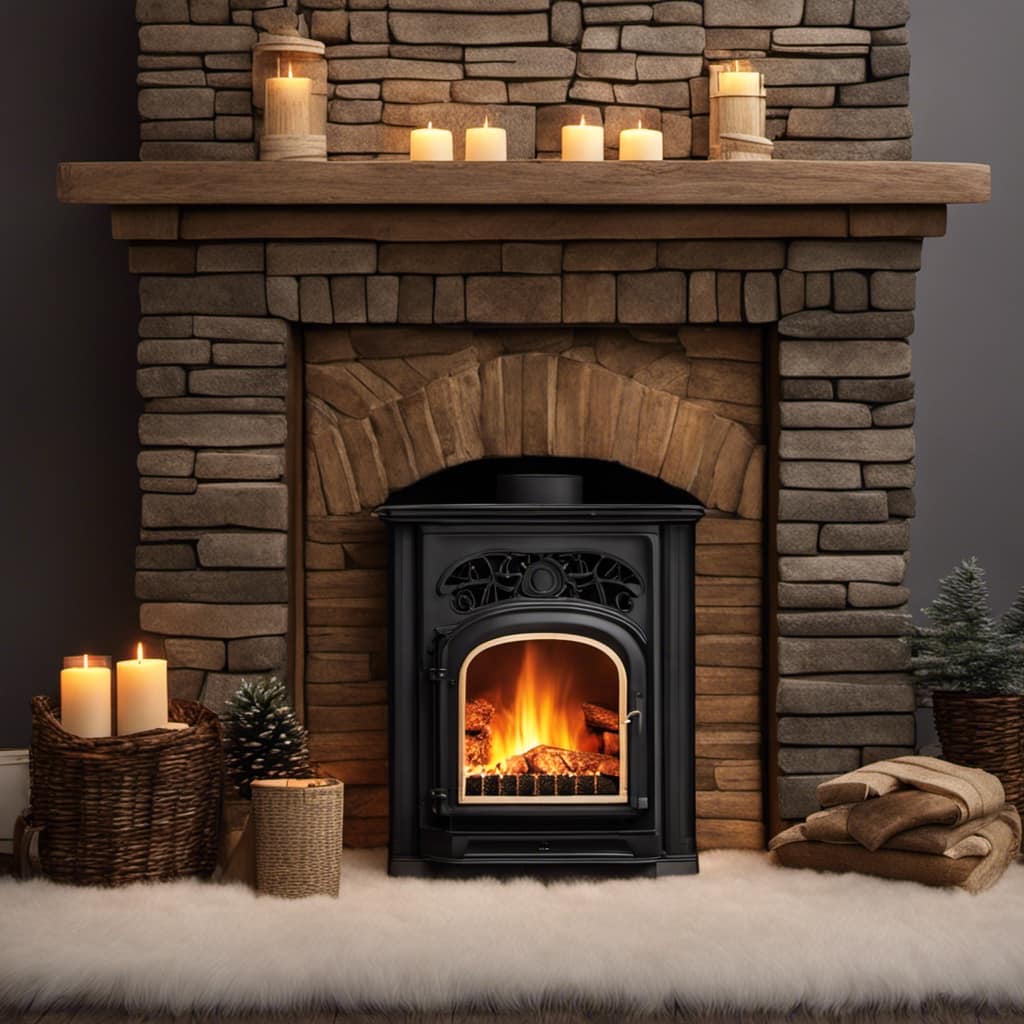
-
Improved airflow: A chimney cap allows air to flow freely in and out of the chimney, improving ventilation. This helps to maintain proper combustion and prevents smoke from backing up into the house.
Overall, installing a chimney cap or rain cap is a wise investment that provides protection, cleanliness, and improved chimney performance.
Regular Maintenance and Inspection Tips
I make sure to schedule regular inspections and perform necessary maintenance tasks to keep my chimney in optimal condition. One of the key reasons for this is to prevent carbon monoxide leaks, which can be extremely dangerous. Carbon monoxide is a colorless and odorless gas that is produced when fuels such as wood, gas, or oil are burned. If there are any issues with the chimney, such as blockages or cracks, carbon monoxide can seep into the home instead of being safely vented outside. This is where the importance of chimney sweeps comes in. A professional chimney sweep will thoroughly clean the chimney, removing any build-up of soot and debris that could potentially cause blockages. They will also inspect the chimney for any signs of damage or deterioration, ensuring that it is functioning properly and minimizing the risk of carbon monoxide leaks.
| Maintenance Task | Frequency |
|---|---|
| Chimney Inspection | Annually |
| Chimney Cleaning | Annually |
| Clearing Debris from Chimney Cap | Regularly |
| Checking Flue Damper | Annually |
| Testing Carbon Monoxide Detectors | Regularly |
Frequently Asked Questions
How Much Does It Cost to Repair a Leaking Wood Stove Pipe?
Repairing a leaking wood stove pipe can vary in cost depending on the extent of the damage and the materials needed. DIY solutions might be cost-effective, but it’s best to consult a professional for an accurate cost estimation.
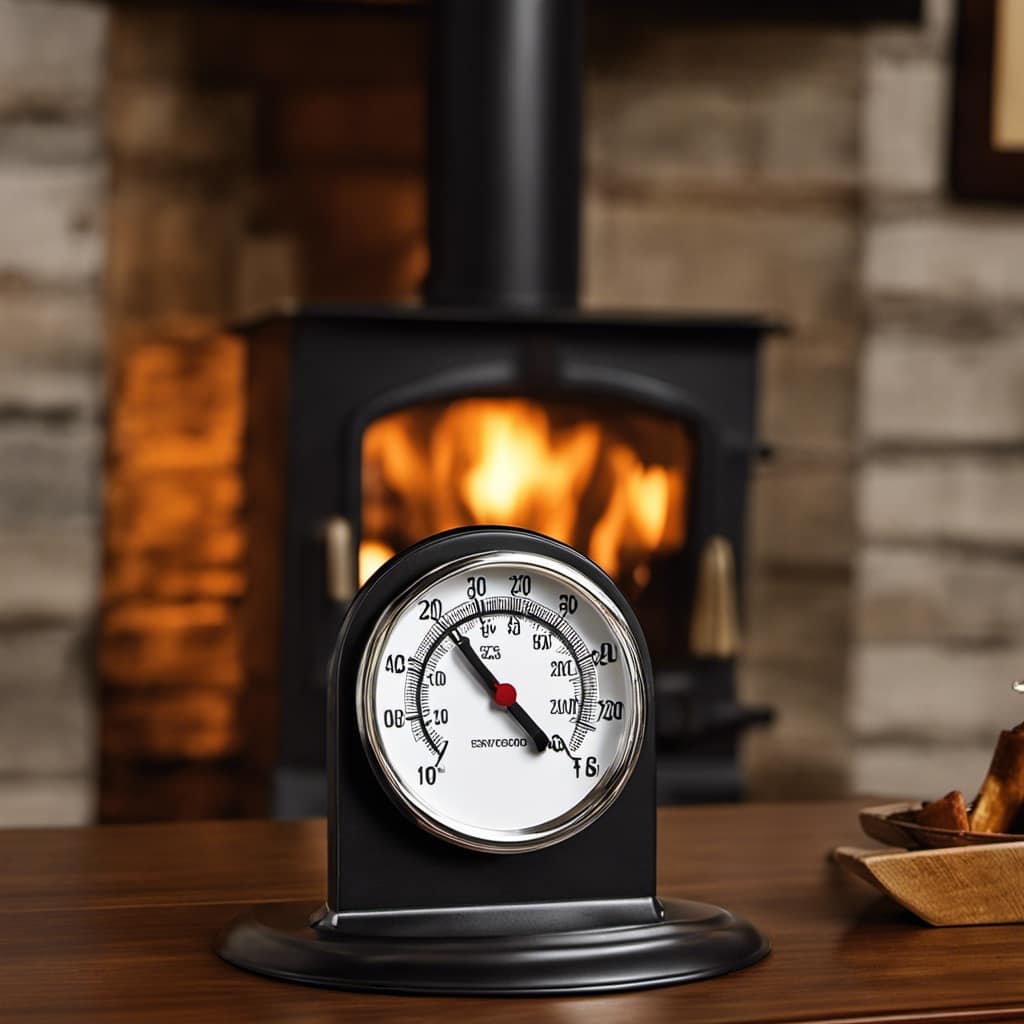
Can I Use Regular Duct Tape to Seal the Joints and Connections of My Wood Stove Pipe?
Using regular duct tape to seal the joints and connections of a wood stove pipe is not recommended as it may not withstand the high temperatures. There are alternative heat-resistant materials specifically designed for this purpose.
Will Installing a Chimney Cap or Rain Cap Completely Eliminate Smoke Leakage?
Installing a chimney cap or rain cap can help reduce smoke leakage, but it may not completely eliminate it. Other common causes of smoke leakage include improper installation, damaged pipe joints, or a clogged chimney.
Can I Use a High-Temperature Silicone Sealant to Seal the Joints and Connections of My Wood Stove Pipe?
Yes, I can definitely use a high-temperature silicone sealant to seal the joints and connections of my wood stove pipe. It’s a great alternative and ensures proper installation, preventing any smoke leakage.
How Often Should I Hire a Professional for Regular Maintenance and Inspection of My Wood Stove Pipe?
How often should I schedule professional maintenance for my wood stove pipe? It is recommended to have a professional inspect and maintain your wood stove pipe at least once a year. Signs that your wood stove pipe needs inspection include visible damage or excessive smoke leakage.
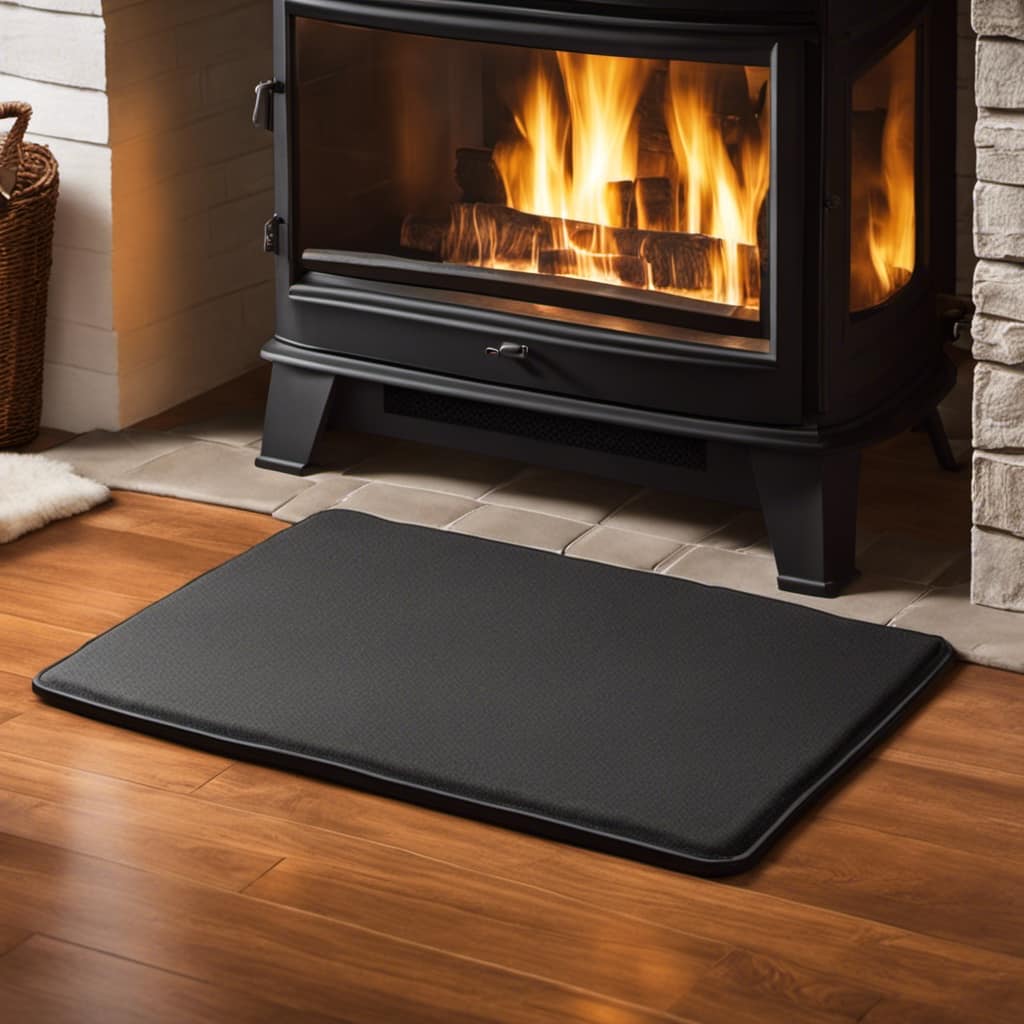
Conclusion
In conclusion, by following these simple steps, you can put an end to the frustrating issue of smoke leakage from your wood stove pipes.
With proper inspection, cleaning, sealing, and installation of a chimney cap, you can ensure a smoke-free and enjoyable experience with your wood stove.
Don’t let smoke ruin your cozy atmosphere any longer; take action today and say goodbye to those pesky leaks!
Growing up surrounded by the vast beauty of nature, Sierra was always drawn to the call of the wild. While others sought the comfort of the familiar, she ventured out, embracing the unpredictable and finding stories in the heartbeat of nature.
At the epicenter of every remarkable venture lies a dynamic team—a fusion of diverse talents, visions, and passions. The essence of Best Small Wood Stoves is crafted and refined by such a trio: Sierra, Logan, and Terra. Their collective expertise has transformed the platform into a leading authority on small wood stoves, radiating warmth and knowledge in equal measure.








